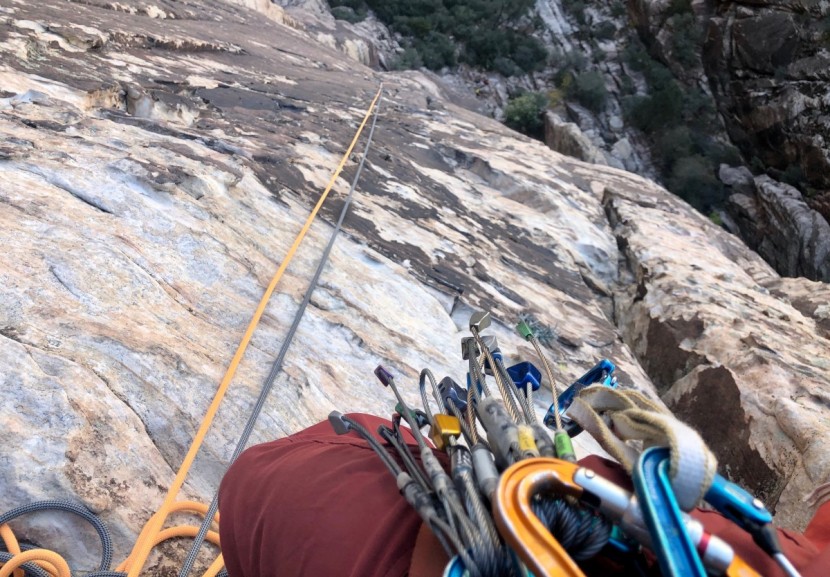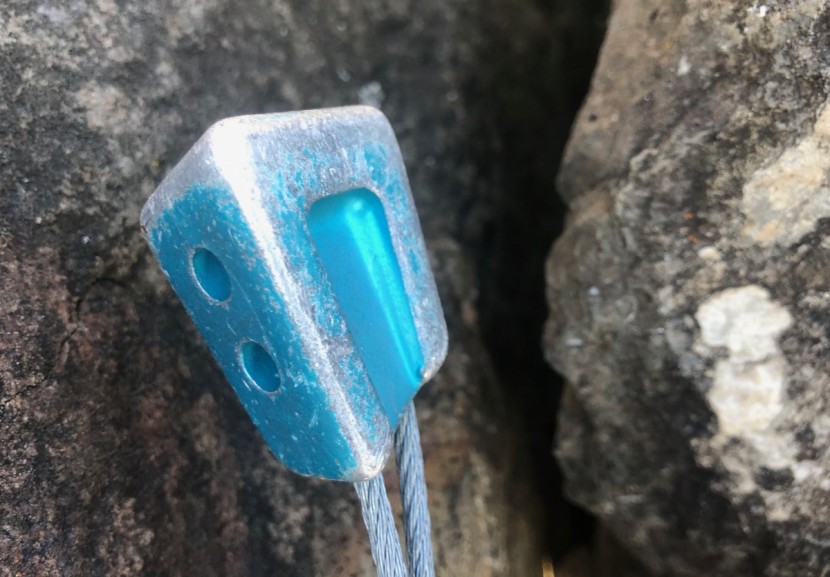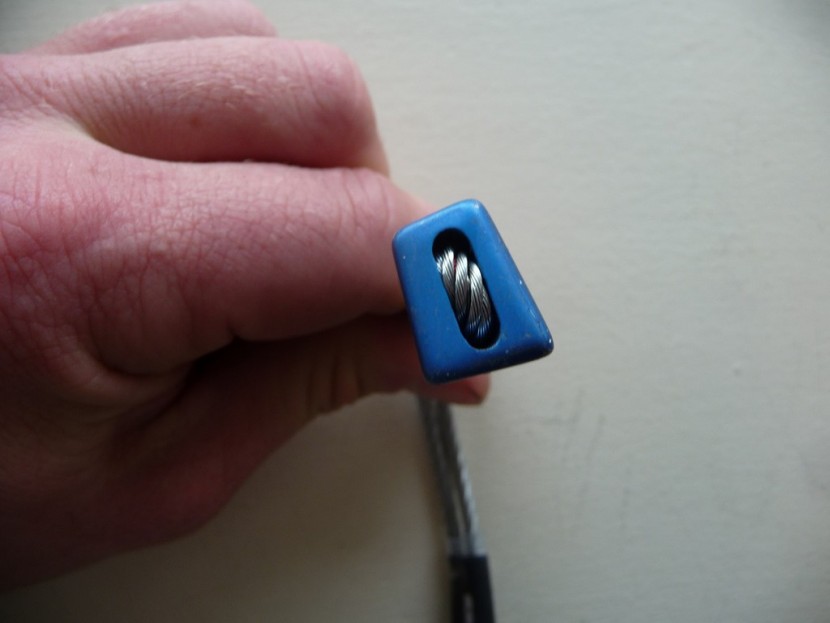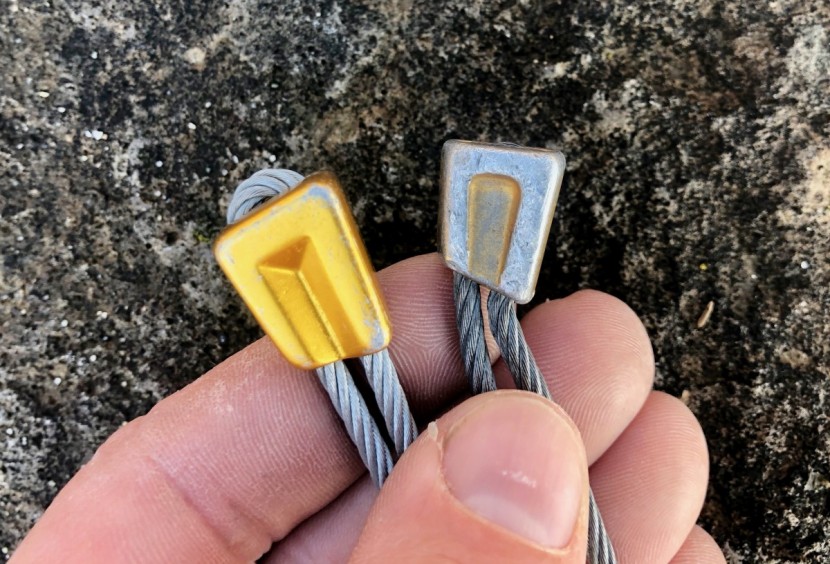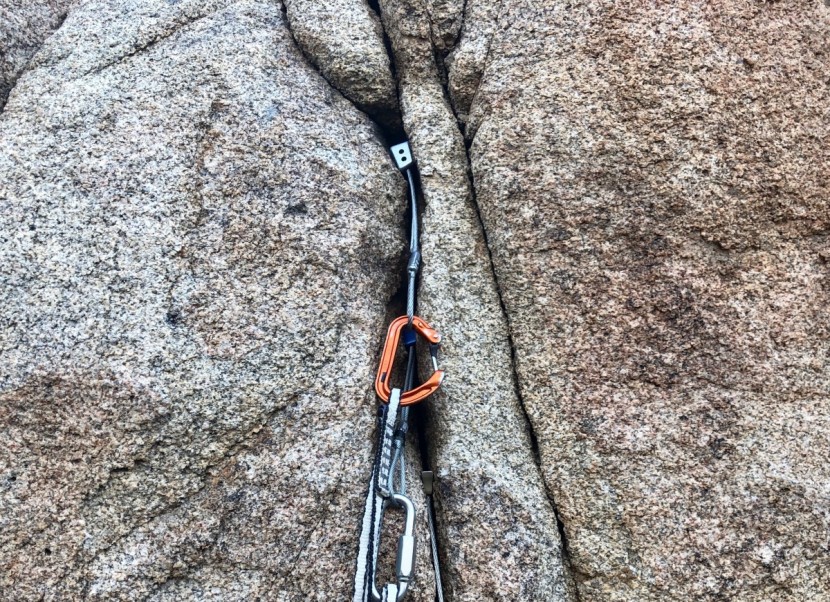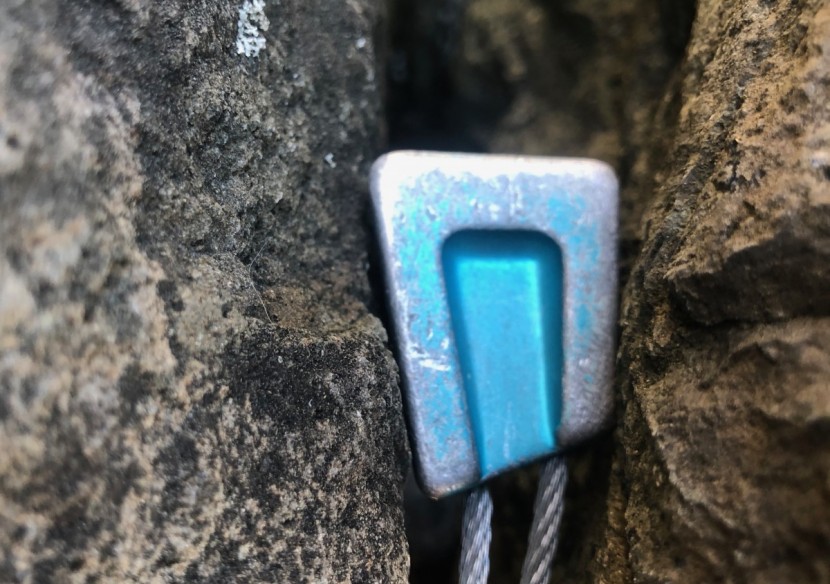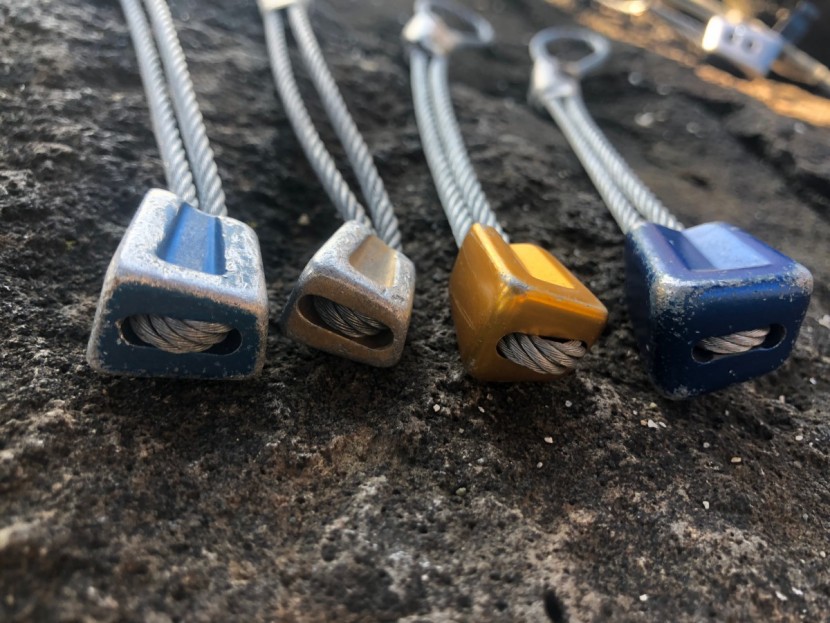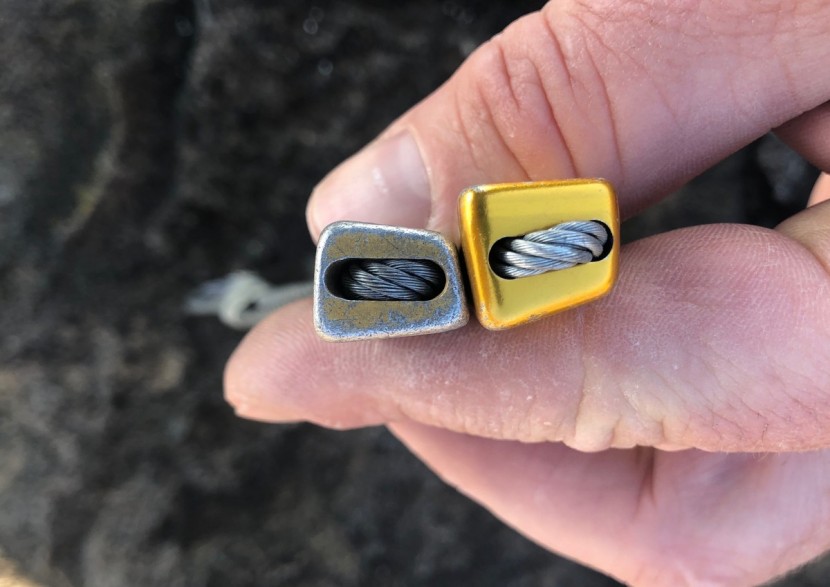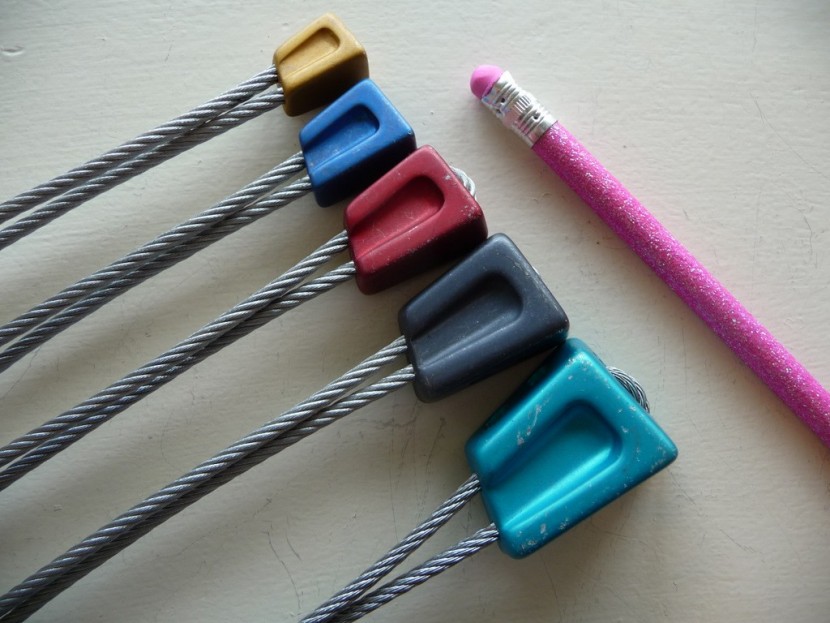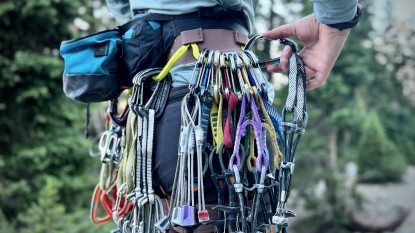Our Verdict
Compare to Similar Products
 This Product
DMM Alloy Offset | |||||
|---|---|---|---|---|---|
| Awards | Best Overall Climbing Nut | Best for All-Around Small Nuts | |||
| Price | $79.95 at REI Compare at 2 sellers | $80 List $49.83 at Amazon | $169.95 at Amazon | $13.50 at REI | Check Price at Amazon |
Overall Score  |
|||||
| Star Rating | |||||
| Bottom Line | They simply work where cams and other nuts won't. These nuts are the most versatile on the market are our favorite for all-around trad climbing | With its ease of cleaning and notable stability, these nuts make a great addition to anyone's rack but their size run isn't quite enough to stand along on their own | These lightweight nuts are perfect for irregular rock types though they lack durability and cannot be purchased in smaller sizes | A lightweight and durable nut that is ideal for pin scars | These durable climbing nuts are very similar to other popular aluminum offsets available, though the red offset is a key size to complete the entire range of sizes between the largest brass offset and the smallest aluminum offsets |
| Rating Categories | DMM Alloy Offset | CAMP USA Pro Nut | Metolius Ultralight... | DMM Peenut | Black Diamond Offset |
| Flared Cracks and Pin Scars (30%) | |||||
| Parallel Cracks (15%) | |||||
| Performance in Textured Rock (15%) | |||||
| Ease of Cleaning (15%) | |||||
| Durability (15%) | |||||
| Use in Other Orientations (10%) | |||||
| Specifications | DMM Alloy Offset | CAMP USA Pro Nut | Metolius Ultralight... | DMM Peenut | Black Diamond Offset |
| Shape | Offset | Curved | Curved | Offset | Offset |
| Available Size Range | 7-11 | 1-5 | 1-10 | 1-5 | 7-11 |
| Material | Aluminum alloy | Aluminum | Anodized aluminum | Aluminum alloy | Aluminum/Steel |
| Manufacturer Rated Strength | 12 kN | 4 kN - 10 kN | 7-10 kN | 4 kN - 8 kN | 10 kN |
Our Analysis and Test Results
The Alloy Offset from DMM is our review team's favorite overall nut for all-around trad climbing because of their versatility and how perfect they are where most other pieces of passive protection or cams are adequate at best. Their two distinct orientations include one that is offset and the other that's less tapered and more traditionally shaped, which together create a ton a versatility. Their hollowed out sides mean they place nicely in highly featured rock while their recessed wire lets them squeeze into many fissures where other models won't fit.
Flared Cracks and Pin Scars
As small cams have gotten better and better, more climbers tend to lean on them for protecting the majority of their pitches. This is how we've come to live in the “generation of the cam” or at least the “cam-first generation”. Even folks who learned in the “Old School” of passive-only climbing have mostly switched over to placing a majority of spring-loaded camming devices over more passive gear.
This is also why the DMM Offset's ability to provide a top-notch placement in scars or other subtly flaring cracks is so important. It's because these are the types of cracks that spring-loaded camming units don't work very well in, but the DMM Offsets are ideal for. They are perfectly tapered for pin scars, which is a huge advantage in older climbing areas. They're also great for routes that have never felt a piton but still have plenty of slightly flared fissures that cams simply don't provide adequate security in - this is where offset nuts are absolutely bomber.
While the Alloy Offsets are the latest iteration of the very first offset nuts and our current overall favorite nut, we must admit they have some healthy competition now. We think the Black Diamond Offset Stoppers are nearly as good. They're only marginally wider, and they offer the same level of tapered “offset.” The slight difference in width isn't a big deal either, as it just means they fit into slightly different sizes cracks. While these two models are great for medium-to-large sizes pieces, we absolutely love DMM Peenut for those smaller sizes that are useful in trad climbing. The Peenuts are designed to be complementary to the Alloy Offsets, expanding your set into smaller sizes. For aid climbs or very thinly protected routes, the DMM Brass Offsets offer excellent options in even smaller sizes. They are made of brass instead of aluminum. This helps because brass slightly deforms when the nut is weighed down, helping it to “bite” better. While this is an advantage for suboptimal placements, they do get beat up quickly, and we think they are less ideal for most climbers' all-around trad racks due to this lack of durability.
Parallel Cracks
Of note, no nut or stopper is very good in a truly parallel-sided crack; these types of cracks are best protected by active spring-loaded camming devices. However, we tested each model's performance in more parallel-sided cracks, but they still need to have some taper for a nut or other piece of passive protection to work.
The Alloy Offset offers two orientations, one being the offset side, which is no doubt going to offer the best security if all else is equal. The other side is thinner and has a trapezoidal shape (still offset, but less so) and works similarly to the secondary axis of models like the Camp Pro Nut and the Black Diamond Stopper. However, all the more traditionally shaped curve nuts will perform better in more parallel-sided cracks. It isn't like the Alloy Offsets don't work, but a more traditional curved nut has three points of contact in a more parallel-sided crack rather than two and tends to be more stable as a result.
Performance in Textured Rock
Another reason we absolutely love the Alloy Offsets is their excellent performance in several different rock types. Their outer rim of metal bites well in smooth Yosemite Granite. At the same time, the hollowed-out interior area of the sides most commonly in contact with the rock allows for nice placements in more heavily textured rock like limestone, welded tuff, or bigger grain granite.
One of the major differences between the Alloy Offsets and the Black Diamond Offset Stoppers is the shape of the hollowed-out area. The BD Offset Stoppers work fine, but this is one of the areas where we noticed the biggest difference between the two.
Ease of Cleaning
In general, offset nuts are more difficult to clean, and the Alloy Offsets are no exception. This is because you generally have to push them back out the way we came in rather than grabbing the cable and pulling it upwards. In fact, grabbing the cable or a draw attached to the cable and tearing this model upward doesn't work very well if the nut has been set, and can make it harder to clean. The hollowed-out area on the sides of the nut also makes it harder to clean as they can get hung up on crystals in the rock. These nuts are awesome, but make sure you bring a good nut tool.
Overall the ease of cleaning of the Alloy Offsets is fairly similar to the Black Diamond Offset Stoppers, slightly easier than the DMM Brass Offsets. However, they are not as easy to clean as the Black Diamond Stoppers or the CAMP Pro Nuts.
Durability
One major improvement DMM has made over the years to the current model that makes it better than previous iterations is that the cable doesn't get kinked as easily from pulling upward trying to clean them. This was a serious problem on older models that could happen on even just the first or second time out and would seriously reduce its user's ability to place the nut again. Not that you aren't able to un-kink this wire (or any other model's wire), but it makes them significantly more durable than previous versions.
The metal on the nut heads is plenty tough, and the anodization lasts longer than most others on the market. We also haven't had any problems with the plastic coming off the swag of the cable even after 7-8 years of pretty heavy use.
Use in Other Orientations
Like many pieces of passive protection, the Alloy Offsets can be placed in two orientations. Like most of the other nuts in this review, they are rectangular in shape and are stronger where the longer side is in contact with the rock. Their skinnier, secondary axis still features a subtle offset that, because of the shorter running length, doesn't feel nearly as offset and doesn't need as much of a flare or pins scar to be bomber.
We actually like this aspect of it and think the secondary sides are a nice compliment to the first. However, while we like this model's secondary orientation, we don't love it quite as much as the Metolius Ultralight Asymmetric Curve Nut or CAMP Pro, which both feature slightly less aggressive tapers that are more useful in real-world situations.
Should You Buy the DMM Alloy Offset?
The Alloy Offsets are slightly more affordable than the nearly identical Black Diamond Offset Stoppers, and while they are more expensive than most other passive protection on the market, we think the amount of security they can provide where more standard nuts or a cam can't will easily be worth it when that is your last piece looking to punching it through a tricky section. We think these excellent pieces of protection are well worth their price and virtually a must-have for most trad climbers to at least keep in their closets - if not on their racks at all times.
Conclusion
Mandatory for older climbing areas like Yosemite, North Conway, Squamish, or Eldorado Canyon, and still the best option for most newer non-pin scared areas; these pieces are the clear favorite of our testing team when it comes to passive protection. They consistently produce the most bomber placements where no cam will fit (or even when a cam will fit). From their seemingly perfect offset shape to the indents on each side that easily accommodate textured rock, these nuts are the bomb and what we're stoked to sink before a potentially problematic move. They are a little harder to clean than more traditional, non-offset nuts, and you do need a few smaller pieces to mate them with for a complete rack. For general free climbing, we recommend the DMM Peenuts, for aid climbing or thin free climbing (think Eldorado Canyon) we like the DMM Brass Offset.







